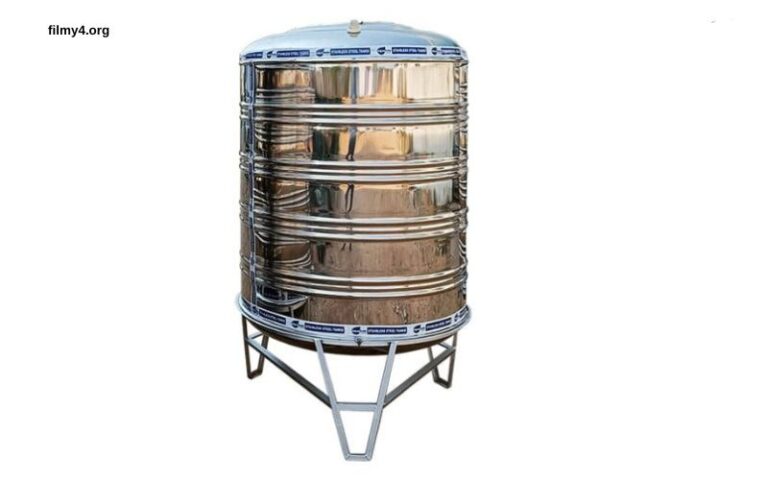Steel water tanks are essential for storing water in various residential, commercial, and industrial settings. Their popularity stems from durability, longevity, and resistance to environmental factors. This comprehensive guide explores the pricing dynamics, types, factors influencing costs, and considerations when purchasing a 1000-liter steel water tank.
Types of Steel Water Tanks
Steel water tanks come in different types, each offering unique advantages:
- Galvanized Steel Tanks: These tanks are coated with zinc to prevent corrosion. They are cost-effective and suitable for outdoor use due to their weather resistance.
- Stainless Steel Tanks: Known for their corrosion resistance and durability, stainless steel tanks are ideal for storing potable water and in applications requiring high hygiene standards.
- Epoxy-Coated Steel Tanks: These tanks have an epoxy coating on the interior to protect against corrosion and contamination, making them suitable for drinking water storage.
- Modular Steel Tanks: Constructed from prefabricated panels, modular steel tanks are versatile and can be assembled on-site to meet specific capacity requirements.
Factors Influencing the Price of 1000-Liter Steel Water Tanks
Several factors determine the price of a 1000-liter steel water tank:
- Material Quality: The type and quality of steel used significantly impact the price. Stainless steel tanks, known for their superior durability and corrosion resistance, are generally more expensive than galvanized or epoxy-coated tanks.
- Manufacturing Process: Tanks manufactured using advanced processes and technologies may cost more due to higher quality standards and precision.
- Design Complexity: Tanks with additional features such as insulation, reinforced structures, or specific fittings can cost more than standard models.
- Brand Reputation: Established brands with a history of quality and reliability often command higher prices due to consumer trust and warranty offerings.
- Market Demand: Supply and demand fluctuations can influence prices. Economic conditions and seasonal variations may also impact pricing.
- Geographical Location: Shipping costs and regional pricing differences can affect the final price of the tank, especially in remote or less accessible areas.
Price Range for 1000-Liter Steel Water Tanks
As of [current year], the price range for 1000-liter steel water tanks varies depending on the type and specifications:
- Galvanized Steel Tanks: Typically priced between $300 and $800, depending on the thickness of the steel and the quality of galvanization.
- Stainless Steel Tanks: Prices range from $800 to $1500 or more, reflecting the premium quality and durability of stainless steel.
- Epoxy-Coated Steel Tanks: These tanks fall in the mid-range category, with prices ranging from $400 to $1000, depending on the epoxy coating quality.
- Modular Steel Tanks: Prices vary widely based on customization and design complexity, ranging from $500 to $1200.
Benefits of Steel Water Tanks
Investing in a steel water tank offers numerous benefits:
- Durability: Steel tanks are robust and resistant to physical damage, making them suitable for long-term use in various environments.
- Corrosion Resistance: Galvanized and stainless steel tanks are highly resistant to rust and corrosion, ensuring water quality remains unaffected.
- Hygienic Storage: Stainless steel tanks are non-reactive and do not impart odors or flavors to stored water, making them ideal for drinking water storage.
- Versatility: Available in various sizes and configurations, steel tanks can be customized to fit specific space and capacity requirements.
- Environmental Sustainability: Steel is recyclable, making it an environmentally friendly choice compared to other materials.
Choosing the Right Steel Water Tank
When selecting a 1000-liter steel water tank, consider the following factors:
- Purpose: Determine whether the tank will be used for residential, commercial, or industrial purposes, as this will influence the type and design required.
- Material Type: Choose between galvanized, stainless, or epoxy-coated steel based on the intended use, durability requirements, and budget.
- Installation Requirements: Consider installation complexity and whether professional installation is necessary, which can add to the overall cost.
- Maintenance Needs: Evaluate the maintenance requirements of the tank and factor this into your decision-making process.
- Budget: Set a budget that aligns with your requirements and consider long-term savings through durability and reduced maintenance costs.
- Brand and Warranty: Opt for reputable brands that offer warranties, ensuring peace of mind regarding product quality and support.
Conclusion
A 1000-liter steel water tank is a reliable solution for storing water in various applications, offering durability, corrosion resistance, and hygiene benefits. Prices vary based on factors such as material type, manufacturing process, design complexity, brand reputation, market demand, and geographical location. Galvanized steel tanks are economical, while stainless steel tanks offer premium quality and longevity. Epoxy-coated and modular tanks provide mid-range options with specific advantages.
By understanding the factors influencing pricing and the benefits of different steel tank types, you can make an informed decision that meets your water storage needs effectively. Whether for residential, commercial, or industrial use, a 1000-liter steel water tank provides a robust and sustainable solution for ensuring a reliable water supply.
